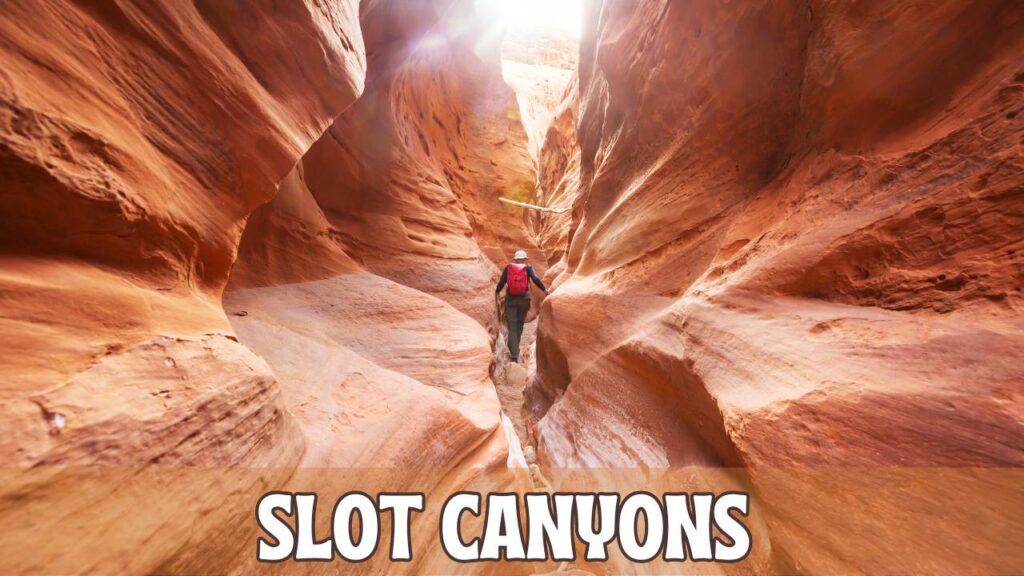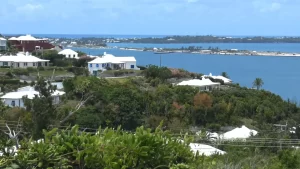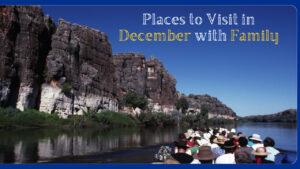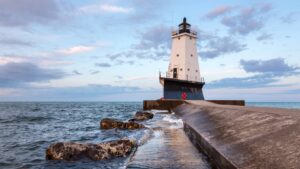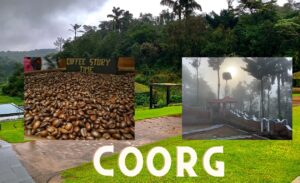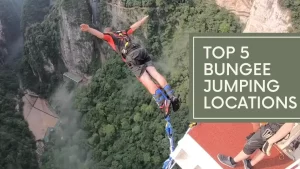Pick top slot canyons in the U.S. with detailed guides on hiking routes, difficulty levels, and best times for photography.
Someone who thrives on outdoor adventure or is always in search of the perfect photo opportunity, then slot canyons should be at the very top of your travel bucket list. These narrow, winding passageways carved by water over millions of years offer an almost otherworldly experience. From towering sandstone walls to radiant light beams, slot canyons combine the thrill of exploration with the awe of nature’s artistry. Here, I’ll take you through the top slot canyons every hiker and photographer should visit, and provide tips on when to go, how to prepare, and what makes each spot unique.
Top Slot Canyons in the U.S. Every Adventurer Should Visit
The American Southwest is home to some of the world’s most spectacular slot canyons, formed over millions of years by the powerful forces of water and wind. These narrow, winding passageways between towering rock walls offer a unique and awe-inspiring hiking experience. If looking to start your slot canyon journey, the following destinations are must-visits for their geological beauty, adventure level, and unforgettable scenery:
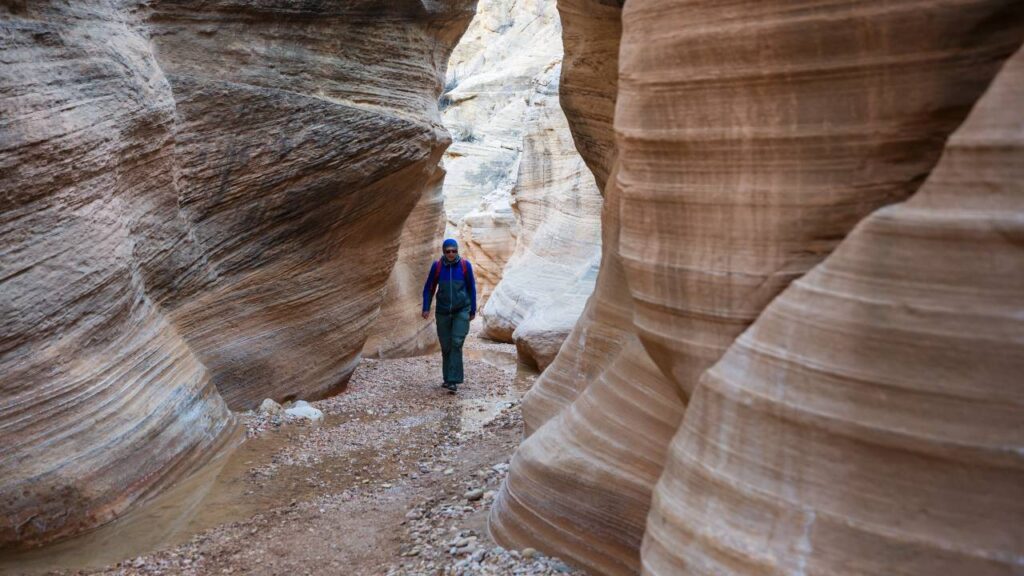
Antelope Canyon, Arizona
Perhaps the most iconic slot canyon in the world, Antelope Canyon is a photographer’s paradise. Located near Page, Arizona, this sandstone marvel is divided into Upper Antelope Canyon (also called “The Crack”) and Lower Antelope Canyon (“The Corkscrew”). The Upper Canyon is especially popular for its shafts of sunlight that beam through narrow crevices, best seen during midday hours. It’s more accessible and flat, making it ideal for beginners and families.
The Lower Canyon is narrower and features a series of ladders and steep steps, offering a more immersive and adventurous experience. Guided tours are required for both sections due to flash flood risks and to help preserve the fragile environment.
Buckskin Gulch, Utah
Located in the Paria Canyon-Vermilion Cliffs Wilderness, Buckskin Gulch is widely considered the longest and deepest slot canyon in North America. It stretches over 13 miles, with some walls soaring over 500 feet high and sections only a few feet wide.
This canyon is perfect for seasoned hikers who are prepared for a long, technical trek that may involve scrambling, wading through pools, and navigating muddy or narrow passages. A permit is required, and checking weather conditions beforehand is critical due to the high risk of flash floods.
The Narrows – Zion National Park, Utah
One of the most famous hikes in Zion National Park, The Narrows offers a truly unique experience. Instead of hiking along a trail, you’ll wade—and sometimes swim—through the Virgin River, surrounded by towering canyon walls that rise up to 1,000 feet.
The full top-down route is a 16-mile journey suitable for experienced hikers, but many visitors opt for the more manageable bottom-up hike starting at the Riverside Walk. Special gear like neoprene socks and hiking sticks are often recommended, especially during cooler months. The interplay of light and water creates ever-changing, mesmerizing views.
Peek-a-Boo and Spooky Gulch – Grand Staircase-Escalante National Monument, Utah
In search of tight squeezes and hands-on fun, Peek-a-Boo and Spooky Gulch should be on your list. Located off Hole-in-the-Rock Road near Escalante, these interconnected canyons feature narrow corridors, twisting chutes, and natural arches, making them perfect for those who enjoy scrambling and a bit of physical challenge.
Spooky Gulch, true to its name, gets as narrow as 10 inches wide in spots, requiring hikers to remove backpacks and sidestep through the canyon. Peek-a-Boo Canyon features fun rock climbs and arches, creating a slot canyon loop that is both adventurous and rewarding. A high-clearance vehicle is recommended to reach the trailhead.
Best Slot Canyons for Stunning Photography
Photographing slot canyons offers a unique challenge that combines narrow corridors, layered rock formations, and shifting light. Every shot feels like a masterpiece, making these locations perfect for photographers looking to capture dramatic and stunning images.
An experienced photographer or an enthusiastic amateur, these slot canyons deliver breathtaking scenes and ideal conditions for photography.
Upper Antelope Canyon, Arizona
Upper Antelope Canyon remains one of the most sought-after photography destinations. Photographers flock here during midday when sunlight beams down through narrow cracks above, casting ethereal shafts of light that create surreal, glowing effects. To capture these iconic light beams, use a tripod and shoot in manual mode.
The contrast between intense light and deep shadows will help you capture the dramatic beauty of the canyon. The canyon’s twisted red sandstone walls shift in color throughout the day, offering vibrant hues and a variety of textures. You’ll need a guided tour to access the canyon due to the risk of flash floods.
Zebra Slot Canyon, Utah
For photographers drawn to unique patterns and vibrant colors, Zebra Slot Canyon delivers extraordinary visuals. The canyon’s striped walls, formed by alternating bands of white, cream, and red sandstone, create an abstract and colorful scene. Morning light enhances the canyon’s natural palette, making it the best time to photograph its vivid hues.
The narrow passageways allow you to capture intimate shots of the canyon’s curves and textures. To get the most out of your visit, plan to arrive early to catch the soft, diffused light that highlights the intricate patterns within the rock.
Little Wild Horse Canyon, Utah
Little Wild Horse Canyon, located near Goblin Valley State Park, is an excellent choice for both novice and experienced photographers. The canyon offers a variety of textures and dramatic angles, particularly at golden hours during sunrise or sunset. The smooth curves of the canyon’s walls, combined with its light-colored sandstone, create a soft, warm glow when the sun hits them.
The canyon’s accessibility also makes it an ideal destination for families looking to capture stunning images of slot canyons without a strenuous hike. With its unique rock formations, this canyon offers endless opportunities for wide-angle landscape shots and close-up detail photography.
Antelope Canyon (Lower), Arizona
Lower Antelope Canyon, while less famous than the Upper Canyon, is equally stunning and offers a more adventurous experience. The canyon’s narrow passages require hikers to climb ladders, which adds a fun element to the exploration. Here, sunlight filters through the cracks in the canyon ceiling, creating beams of light that shine into the dark, narrow space.
The shadows and light contrasts make this a prime location for dramatic, high-contrast photography. The canyon’s winding walls, shaped by centuries of erosion, create beautiful curves and undulating lines that serve as perfect subjects for photographers.
The Narrows, Zion National Park, Utah
The Narrows in Zion National Park offers a completely different experience for photographers. This slot canyon requires hikers to wade through the Virgin River, creating a perfect opportunity for dynamic water shots framed by towering rock walls. The combination of water and rock formations, along with the changing light as the sun shifts, offers unique opportunities for captivating images.
Early mornings or late afternoons provide the best lighting conditions, with the sun casting soft, golden hues that illuminate the canyon walls. Photographers should pack waterproof gear, including bags and lens covers, to protect their equipment from the river’s splashes.
Hidden Slot Canyons Worth Exploring Off the Beaten Path
While popular slot canyons can be crowded, many lesser-known spots offer stunning beauty and solitude. These hidden gems provide unique landscapes and fewer tourists, making them perfect for adventurers seeking peace and adventure.
Cathedral Wash, Arizona
Located near Lees Ferry, Cathedral Wash offers a moderate hike with scenic views of colorful rock formations and the Colorado River. It’s a less-crowded alternative to popular canyons, ideal for photographers looking for panoramic desert landscapes.
Paria Canyon, Arizona/Utah
Paria Canyon offers a multi-day backcountry adventure through vibrant, narrow passages. Permits are required, but the reward is solitude and breathtaking geological formations. This remote canyon is perfect for experienced trekkers seeking a wilderness experience.
Kanarra Creek Canyon, Utah
Kanarra Creek near Zion features waterfalls, moss-covered rocks, and wooden ladders. It’s a peaceful alternative to Zion’s crowded trails, offering a unique experience with flowing water, vibrant sandstone, and excellent photography opportunities.
Slot Canyons Hiking Guide: Trails for Beginners to Experts
Slot canyon hiking offers adventures for all levels, from easy strolls to challenging backcountry hikes. Here’s a quick guide to help you choose the right trail for your experience.
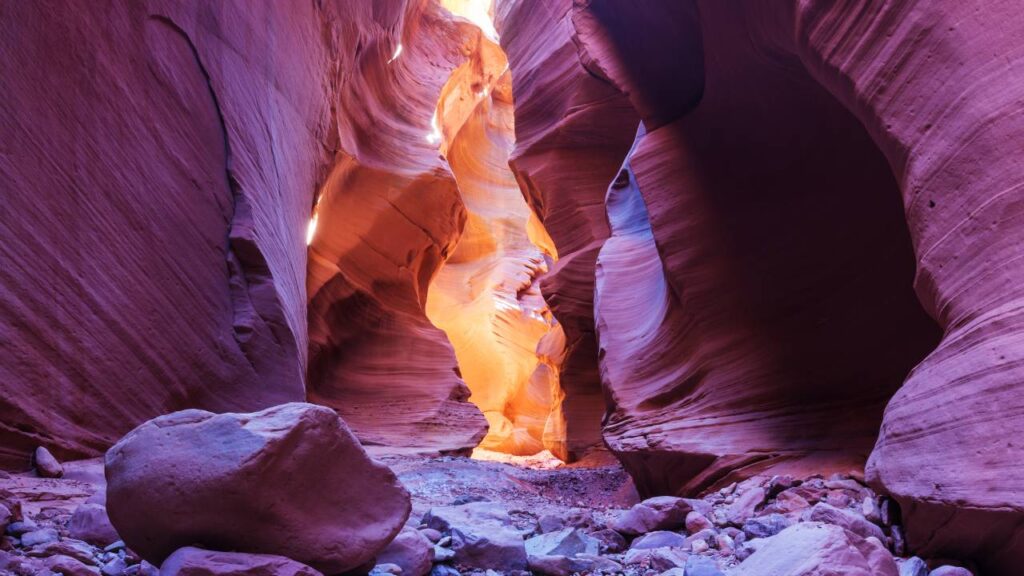
For Beginners: Wire Pass Trail, Utah
Wire Pass Trail is an easy 1.5-mile hike that introduces you to slot canyons. It connects to Buckskin Gulch, allowing you to visit a famous canyon without committing to a lengthy trek. The trail is gentle, with smooth paths and colorful rock formations, perfect for families or those new to canyon hiking.
For Intermediate Hikers: Little Wild Horse Canyon, Utah
The Little Wild Horse Canyon loop is 8 miles long, offering a mix of easy and moderate terrain. It features narrow passageways and some scrambling, providing a fun challenge without being too difficult. The canyon walls are stunning, and the trail is accessible for most hikers with some fitness and agility.
For Experts: Buckskin Gulch and Paria Canyon
Buckskin Gulch is one of the longest slot canyons in the world, stretching over 13 miles. It requires careful planning and permits, with rugged terrain and a risk of flash floods. Similarly, Paria Canyon offers a multi-day adventure, demanding backcountry skills and survival knowledge. Both are best suited for experienced hikers seeking a true wilderness experience.
When to Visit Slot Canyons for the Best Lighting and Weather
Timing is essential when exploring slot canyons, both for capturing stunning photographs and for ensuring a safe and enjoyable hike. The right conditions can make all the difference in your experience.
Best Time of Day
The time of day you visit a slot canyon can greatly affect the lighting and the mood of your photos. Midday (around 11 AM to 1 PM) is typically the best time for capturing light beams in canyons like Antelope Canyon and Upper Antelope Canyon, as the sun shines directly down into the narrow passageways, creating dramatic, glowing shafts of light.
If interested in softer, more diffused light, early morning and late afternoon are ideal for photographing the canyon walls’ rich textures and vibrant colors. These times of day offer a gentler light, which is perfect for highlighting the canyon’s layered rock formations and warm hues.
Best Season
For optimal weather and conditions, visit during spring (March to May) or fall (September to November). During these seasons, temperatures are moderate, making hiking more comfortable, and the risk of flash floods is lower compared to the summer months. Summer can bring extreme heat and monsoon storms, increasing the chances of dangerous flash floods, particularly in desert areas. Fall also tends to bring clearer skies, which is perfect for photography.
Avoid visiting during the monsoon season (July to September) unless you’re experienced and well-prepared. This period brings frequent, unpredictable storms that can flood slot canyons rapidly, creating serious safety risks.
Avoiding Flash Floods
Flash floods are a major concern when exploring slot canyons, as these narrow passageways can fill with water in minutes during heavy rainfall. These floods can be life-threatening and cause significant damage. Always check the weather forecast and consult with local ranger stations or guides before entering any canyon, especially during rainy seasons. Be aware of any potential for flash floods, even if it doesn’t rain directly in the canyon you’re visiting. It’s wise to turn back or avoid certain areas if the weather looks unstable.
Essential Safety Tips for Hiking Through Slot Canyons
Slot canyons offer breathtaking views, but they also present unique risks. An experienced hiker or a beginner, preparation is key to ensuring a safe and enjoyable adventure.
1. Always Check the Weather
Flash floods are the most significant hazard in slot canyons, and they can occur without warning. Even if it’s not raining in the canyon, rainfall miles upstream can send a dangerous rush of water through narrow passages. Always check the weather forecast and monitor real-time updates using apps like NOAA or local weather services. Avoid canyon hikes if storms are expected, and make sure to know the flood risk in the area before setting out.
2. Don’t Go Alone (Unless You’re Experienced)
It’s always safer to hike with a partner, especially in more isolated or challenging canyons. Having someone with you ensures help is available in case of injury or emergency. If you must hike solo, inform someone of your exact location, planned route, and expected return time. Stay in touch when possible and carry an emergency communication device, such as a satellite phone, if you’re in a remote area.
3. Wear Appropriate Footwear
Good footwear is essential for navigating slippery, wet, or uneven surfaces. Avoid wearing sandals or open-toed shoes, as they provide little support or protection. Instead, wear hiking boots with sturdy ankle support and strong traction to prevent slipping, especially when walking through water or on loose rock. Waterproof boots are a smart choice, as they will keep your feet dry during stream crossings or wet canyon floors.
4. Pack the Essentials
Ensure you bring the right gear for a safe hike. Carry at least 2-3 liters of water to stay hydrated, along with high-energy snacks to keep your energy levels up. A headlamp is vital for low-light conditions, and extra batteries are a must if you’re planning on taking photos. A first-aid kit, a GPS device, or an offline map will help you navigate and handle emergencies. For photographers, consider weatherproofing your camera gear and carrying backup batteries and memory cards.
5. Secure Necessary Permits
Many popular slot canyons, such as Buckskin Gulch and Paria Canyon, require permits for both day hikes and overnight trips. Some canyons are only accessible with a reserved permit to limit the number of visitors and preserve the environment. Make sure to plan ahead and secure your permits via the Bureau of Land Management (BLM) or park service websites. Check for any seasonal restrictions or special regulations before your hike.
6. Be Aware of Timing and Light Conditions
The lighting in slot canyons can change rapidly, especially during midday when the sun is directly overhead. Some canyons are known for their light beams, but these phenomena only occur at specific times. Research the best times to visit for the best lighting conditions and be prepared for shifts in light throughout your hike.
7. Respect the Environment
Leave no trace. Slot canyons are fragile environments, and human impact can damage these natural wonders. Stick to marked trails, avoid touching delicate rock formations, and take all trash with you. Be respectful of the wilderness and wildlife, and follow all posted guidelines and regulations.
Pack smart, stay safe, and don’t forget your camera—these are memories you’ll want to capture forever.
FAQs
1. What are slot canyons?
Slot canyons are narrow, winding passageways formed by the erosive forces of water over millions of years. They are typically found in desert regions and feature high, narrow walls that often create dramatic shadows and light effects.
2. Where are the most famous slot canyons located?
Some of the most famous slot canyons are located in the southwestern United States, particularly in Arizona and Utah. Notable examples include Antelope Canyon, Buckskin Gulch, The Narrows, and Peek-a-Boo Canyon.
3. What is the best time to visit slot canyons for photography?
The best time to visit slot canyons for photography is usually around midday when the sun is high and light beams penetrate the narrow openings, especially in places like Antelope Canyon. Early morning and late afternoon can also provide softer lighting.
4. Are slot canyons safe to hike through?
While slot canyons are generally safe to hike, they can pose risks, especially during heavy rains when flash floods can occur. Always check the weather forecast before hiking and be cautious of tight spaces, steep climbs, or slippery rocks.
5. Can I visit slot canyons on my own, or do I need a guide?
Some slot canyons, like Antelope Canyon, require a guided tour due to safety concerns and land access restrictions. Others, like Buckskin Gulch or Little Wild Horse Canyon, can be hiked independently, but it’s always recommended to prepare thoroughly and carry a map or GPS.
6. What should I bring when hiking in slot canyons?
Essential items to bring when hiking slot canyons include plenty of water, sturdy hiking shoes, a headlamp, sunscreen, a camera (if you’re photographing), snacks, and a first-aid kit. A portable charger is also helpful for phones or cameras.
7. Are there any health risks in slot canyons?
The main health risks in slot canyons are flash floods, dehydration, heat exhaustion, and the physical challenge of tight spaces and difficult terrain. Always ensure you’re physically prepared and avoid hiking in extreme weather conditions.
8. What’s the difference between slot canyons and regular canyons?
The main difference is the width. Slot canyons are significantly narrower, with walls that can be just a few feet wide but reach hundreds of feet high. Regular canyons tend to have much wider openings and are typically easier to navigate.
9. How long do slot canyon hikes typically take?
Hike durations vary depending on the slot canyon and your hiking ability. Short hikes, like those in Antelope Canyon, can take 1-2 hours, while longer, more challenging hikes, such as in Buckskin Gulch, can take several hours or even multiple days.
10. Can I visit slot canyons during the winter?
Yes, you can visit slot canyons in the winter, but temperatures can be colder, especially in desert regions. Winter visits can offer fewer crowds and beautiful landscapes, but always check road conditions, weather forecasts, and flash flood warnings before heading out.
